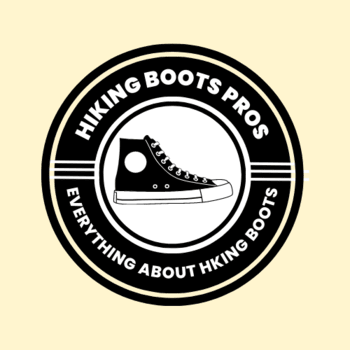Hiking is a great way to explore the outdoors and stay active. However, foot pain and blisters from ill-fitting hiking boots can make the experience less enjoyable. One of the most common issues hikers face is heel lift, which occurs when the heel of the foot moves up and down inside the boot.
In this blog post, we will discuss the causes of heel lift, how to choose the right hiking boots and techniques for preventing heel lift while hiking.
How to Prevent Heel Lift in Hiking Boots?
A heel lift can be a frustrating and painful experience while hiking. Fortunately, there are several techniques you can use to prevent it. One of the most effective ways to prevent heel lift is by ensuring your boots fit properly. Choosing the right size and trying on boots at the end of the day when your feet are swollen can help you achieve a good fit.
Another way to prevent heel lift is by using insoles or orthotics to provide additional support and stability to your feet. Additionally, lacing techniques such as the heel lock can help keep your heel in place.
What Are The Causes of Heel Lift?
A heel lift is a common issue that hikers experience when wearing hiking boots. It occurs when the heel of the foot moves excessively within the boot, causing discomfort and pain. Understanding the causes of heel lifts can help hikers take the necessary steps to prevent it from happening.
One of the primary causes of heel lift is an ill-fitting hiking boot. When the boot is too loose or tight, the foot will slide inside the shoe, causing the heel to lift. Additionally, boots that are too shallow or too deep can also cause heel lift by not properly cradling the heel.
Why Does Heel Lift Occur?
A heel lift can be caused by several factors, including an ill-fitting boot, worn-out or unsupportive insoles, or weak foot muscles. A boot that is too large or too small can cause your heel to move around inside the boot, leading to blisters and foot pain.
Additionally, worn-out insoles or those that lack support can make your foot slide around in the boot. Weak foot muscles can also contribute to heel lift by making it difficult to maintain a stable footing while hiking.
Factors that Contribute to Heel Lift
There are several factors that can contribute to heel lift, including the shape of your foot, the weight of your pack, and the terrain you are hiking on. Individuals with high arches or flat feet may be more prone to heel lift due to the shape of their feet.
Carrying a heavy pack can also cause your foot to slide around in the boot, leading to heel lift. Finally, hiking on steep or uneven terrain can cause your foot to move around inside the boot.
How to Choose the Right Hiking Boots?
Choosing the right hiking boots is critical to prevent heel lift and foot pain. Here are some essential factors to consider when selecting hiking boots:
Importance of Right-Hiking Boots
Choosing the right hiking boots is essential for your hiking experience, as it can make the difference between an enjoyable hike and a painful one.
Hiking boots provide support and stability for your feet, ankles, and lower legs, which helps to prevent injury, particularly when hiking on rough terrain. Additionally, hiking boots are designed to protect your feet from sharp rocks, debris, and other hazards you may encounter on the trail.
Features to Look for in Hiking Boots to Prevent Heel Lift
To prevent heel lift, look for hiking boots that have a secure fit, particularly around the heel and ankle. Some features to look for in hiking boots to prevent heel lift include:

A sturdy heel counter is the part of the shoe that wraps around the heel and provides support. A sturdy heel counter can prevent your heel from lifting and moving around in the boot. Hiking boots with good ankle support can help prevent your foot from slipping around inside the boot, reducing the risk of heel lift. Look for a hiking boot with a wide enough toe box to allow your toes to move comfortably. This can help prevent blisters and other foot injuries.
Tips for Selecting the Right Hiking Boots
Shop in the afternoon. Your feet tend to swell throughout the day, so it’s best to try on hiking boots in the afternoon when your feet are at their largest. Wear the socks you plan to wear on your hike when trying on hiking boots.
This will give you a better idea of how the boots will feel on the trail. Take your time. Don’t rush the process of selecting hiking boots. Walk around the store, try on different styles and brands, and make sure the boots fit snugly and feel comfortable.
Techniques for Preventing Heel Lift While Hiking
In addition to selecting the right hiking boots, there are some techniques you can use to prevent heel lift while hiking:
Ensure your hiking boots are laced tightly and securely. Start by lacing the boots loosely at the bottom and then gradually tighten them as you move up toward the ankle. This will help to prevent your foot from sliding around inside the boot. Adding insoles to your hiking boots can provide additional support and cushioning, which can help prevent heel lift and foot pain.
Resting and stretching your feet periodically can help reduce foot fatigue and prevent heel lift. Check your fit While on the trail, check your boots periodically to ensure they fit properly. Tighten laces or adjust insoles
READ MORE ABOUT: Should your toes touch in hiking boots
Conclusion
In conclusion, heel lifts can be a frustrating and painful experience while hiking. However, by understanding the causes of heel lifts, choosing the right hiking boots, and using proper techniques to prevent them, you can enjoy a comfortable and pain-free hiking experience.
Remember always to choose boots that fit properly, use supportive insoles or orthotics, and practice lacing techniques that keep your heel in place. With these tips in mind, you can hike confidently and avoid heel lift discomfort.
FAQs
Yes, using insoles or orthotics that provide arch and heel support can help prevent heel lift in hiking boots and improve overall comfort and stability.
To properly lace hiking boots and prevent heel lift, start by tying the bottom of the laces snugly, then pull the laces tight around the ankle and tie them securely with a double knot. You can also use locking laces or a heel lock technique to further prevent heel slippage.

Tyler Looney is an avid hiking enthusiast and the author of HikingBootsPros.com, a website dedicated to providing helpful insights and advice on choosing the best hiking boots. His expertise and passion for hiking have made him a valuable resource for both beginner and experienced hikers alike.

